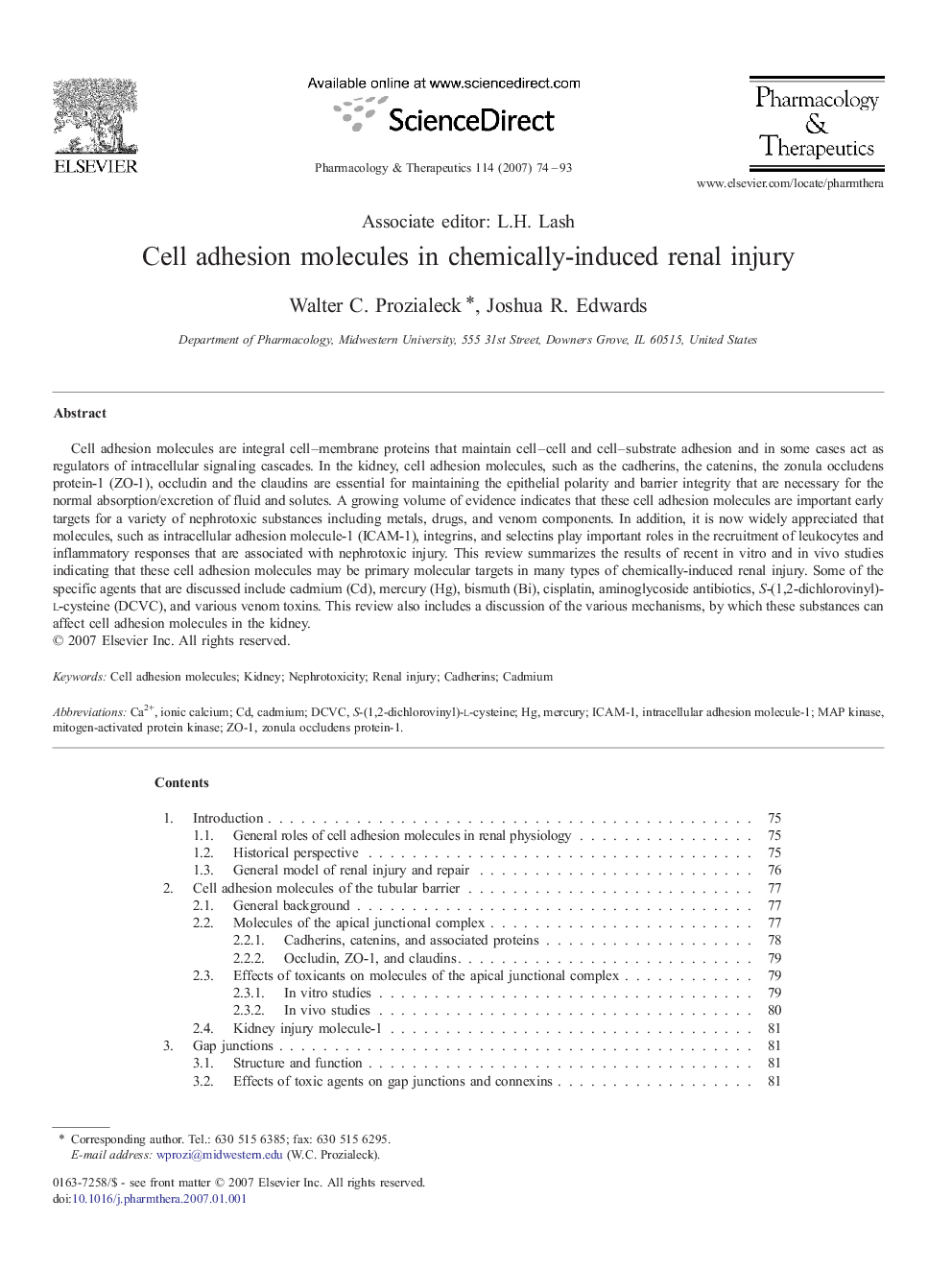| کد مقاله | کد نشریه | سال انتشار | مقاله انگلیسی | نسخه تمام متن |
|---|---|---|---|---|
| 2563733 | 1127559 | 2007 | 20 صفحه PDF | دانلود رایگان |

Cell adhesion molecules are integral cell–membrane proteins that maintain cell–cell and cell–substrate adhesion and in some cases act as regulators of intracellular signaling cascades. In the kidney, cell adhesion molecules, such as the cadherins, the catenins, the zonula occludens protein-1 (ZO-1), occludin and the claudins are essential for maintaining the epithelial polarity and barrier integrity that are necessary for the normal absorption/excretion of fluid and solutes. A growing volume of evidence indicates that these cell adhesion molecules are important early targets for a variety of nephrotoxic substances including metals, drugs, and venom components. In addition, it is now widely appreciated that molecules, such as intracellular adhesion molecule-1 (ICAM-1), integrins, and selectins play important roles in the recruitment of leukocytes and inflammatory responses that are associated with nephrotoxic injury. This review summarizes the results of recent in vitro and in vivo studies indicating that these cell adhesion molecules may be primary molecular targets in many types of chemically-induced renal injury. Some of the specific agents that are discussed include cadmium (Cd), mercury (Hg), bismuth (Bi), cisplatin, aminoglycoside antibiotics, S-(1,2-dichlorovinyl)-l-cysteine (DCVC), and various venom toxins. This review also includes a discussion of the various mechanisms, by which these substances can affect cell adhesion molecules in the kidney.
Journal: Pharmacology & Therapeutics - Volume 114, Issue 1, April 2007, Pages 74–93